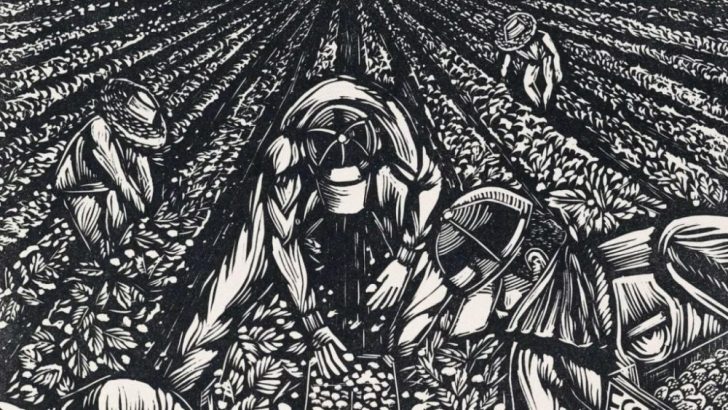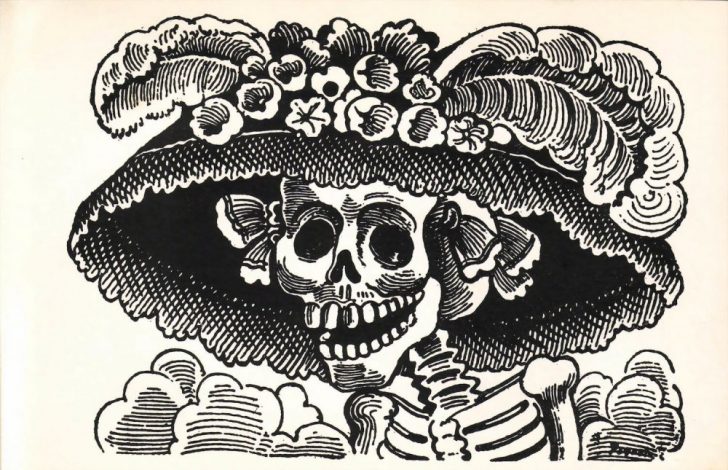Mexican printmaking has captivated audiences for centuries, creating vivid, culturally charged imagery that speaks to the country’s history, struggles, and spirit. This artistic form, which includes woodcuts, lithographs, and screen prints, goes beyond simple imagery, offering powerful social commentary and unforgettable characters.
Now, through “Mexican Prints at the Vanguard” at The Met, visitors can witness this dynamic evolution of printmaking – from the 18th century to the mid-20th century – and appreciate its influence on modern art.
A Look at the Rich History of Mexican Printmaking
Mexican printmaking traces its roots to the colonial period, where it was initially a tool of the church. The Spanish colonizers brought the printing press to Mexico in the 16th century, and printmaking found a purpose in spreading religious imagery, helping convert Indigenous people to Christianity.
However, as Mexico fought for independence in the early 19th century, printmaking began to evolve, taking on themes that reflected national identity and the fight for social justice.

By the late 19th century, Mexican printmaking shifted again, moving from religious and governmental themes to addressing social and political issues head-on. Artists like José Guadalupe Posada used the medium to critique inequality and corruption with his now-iconic depictions of “Calaveras,” or skeletons. These depictions reflected the struggles and stories of everyday Mexicans.
Posada’s work, particularly “La Calavera Catrina,” a skeletal woman in elaborate dress, satirized the upper class and became an enduring symbol of Día de los Muertos. This era marked a transformation, as printmaking became an instrument of social awareness, making Mexican printmaking a powerful voice for the voiceless.
“Mexican Prints at the Vanguard” Exhibition at The Met
The Met’s current exhibition, “Mexican Prints at the Vanguard,” offers an immersive journey through Mexico’s printmaking heritage. Running from September 12, 2024, through January 5, 2025, the exhibition brings together an extensive collection of Mexican prints from the 18th to the mid-20th century.
The pieces, many of which were donated by the French-born Mexican artist Jean Charlot, showcase how Mexican printmakers addressed social, political, and cultural themes through a wide array of techniques and styles.

The exhibition highlights iconic prints, like Posada’s skeletal calaveras, alongside works that used newer methods, such as lithography and screen printing. Each print is a window into the social issues of its time, reflecting the artist’s response to inequality, corruption or a call to celebrate Mexico’s Indigenous roots.
The Impact of Artists like José Guadalupe Posada and Diego Rivera
One cannot discuss Mexican printmaking without mentioning José Guadalupe Posada, a towering figure in the art form. His depictions of skeletons, Calaveras, and satirical characters offered biting commentary on societal issues, with works like “La Calavera Catrina” remaining emblematic of Mexican culture.
Posada’s choice of skeletons was significant. By depicting death as equalizing, he illustrated the plight of the poor and criticized the excesses of the elite. His art made complex political messages accessible, thus leaving an indelible mark on Mexican art.
Diego Rivera, famous for his murals and alignment with Communist ideals, further amplified Posada’s legacy. Rivera incorporated La Catrina into his mural “Dream of a Sunday Afternoon in Alameda Park,” presenting her as an embodiment of Mexican resilience and cultural identity.
This skeletal figure, once a satire of class pretensions, transformed into a symbol of Mexico’s heritage, a rich blend of Indigenous and European influences. Rivera and Posada, through their use of Mexican printmaking, crafted powerful messages that continue to resonate in both art and society.




